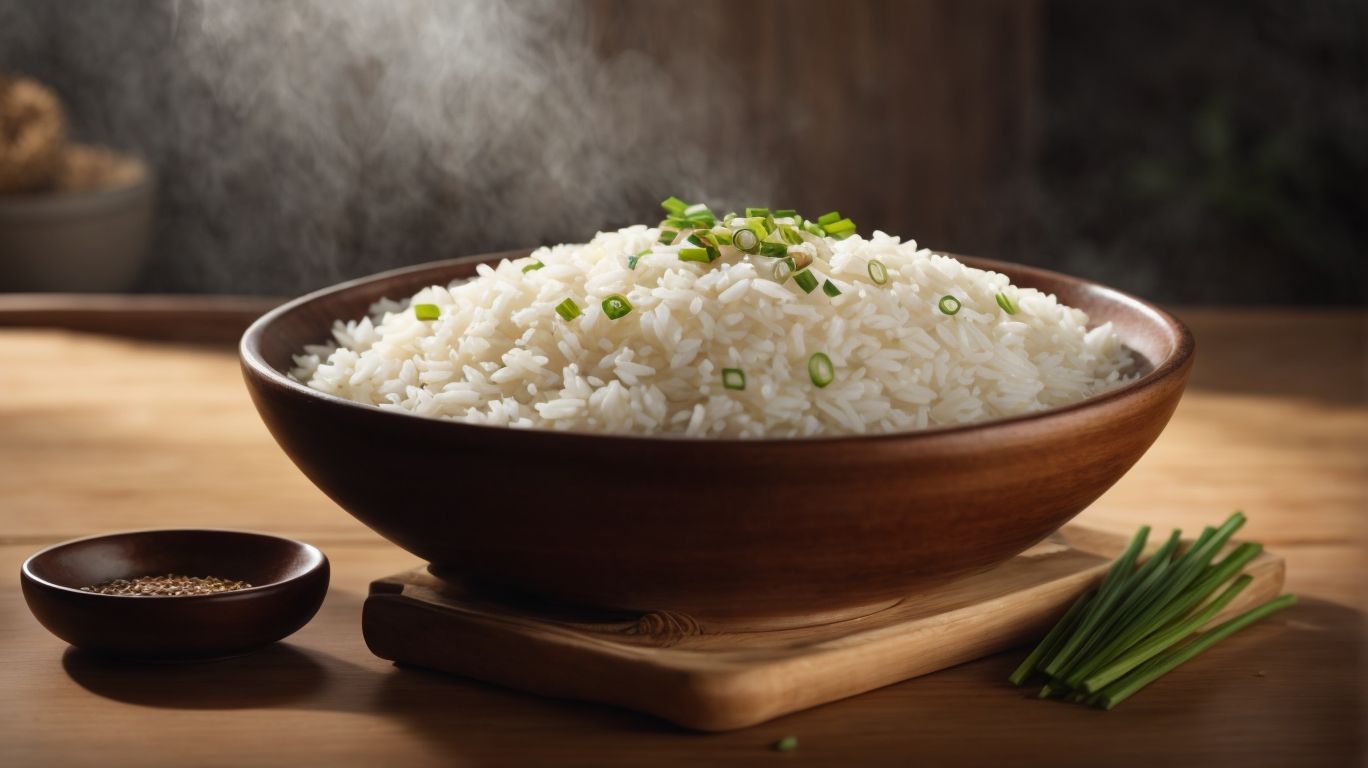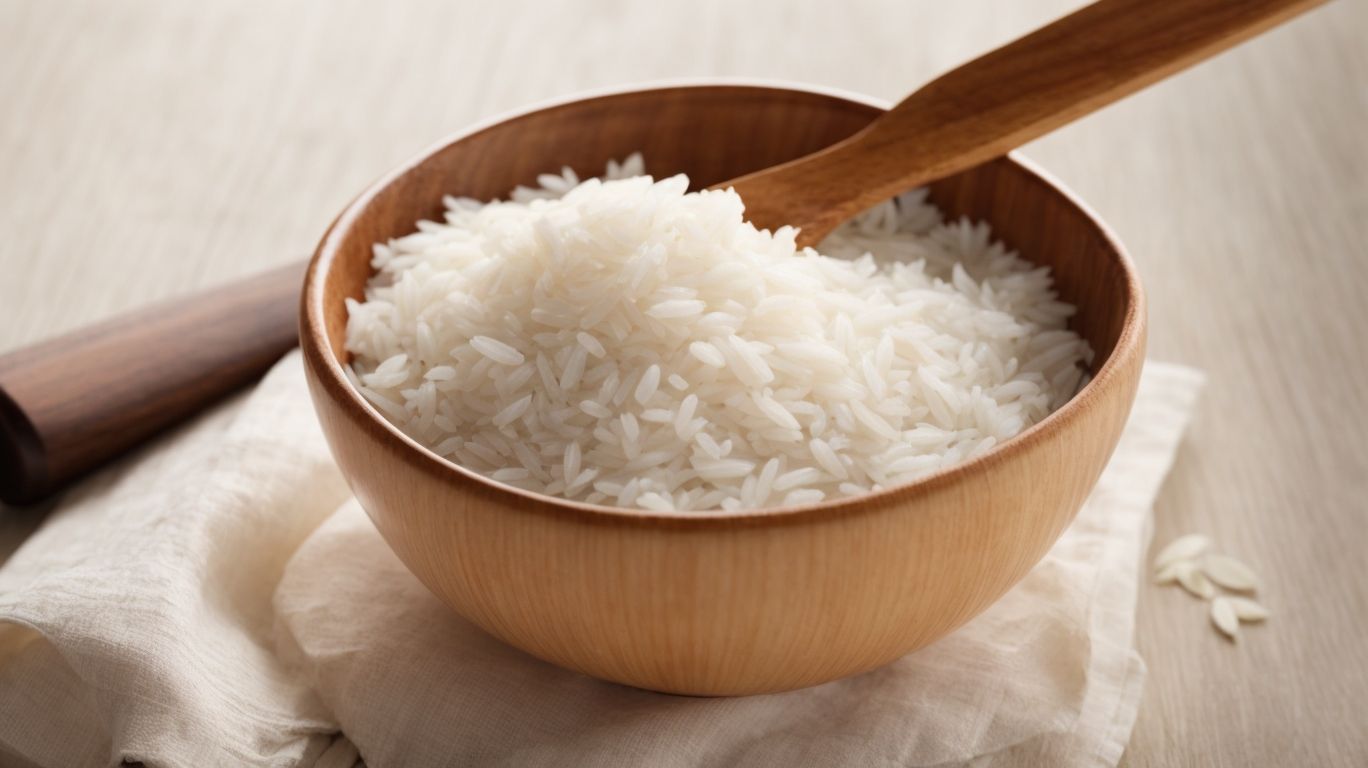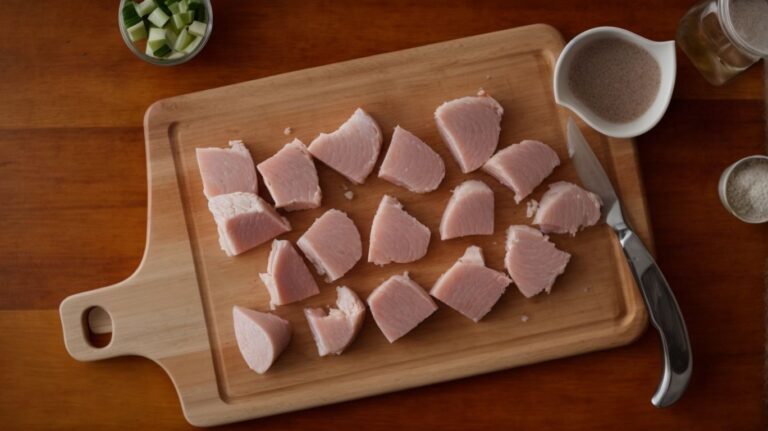How to Cook Jasmine Rice?
Looking to elevate your cooking game with aromatic and flavorful Jasmine Rice?
We dive into the origins of Jasmine Rice, its nutritional benefits, and step-by-step instructions on how to cook it perfectly every time.
From rinsing to fluffing, we share all the tips and tricks to ensure your Jasmine Rice turns out fluffy and delicious.
Get your rice cooker ready and let’s get cooking!
Key Takeaways:
About Jasmine Rice
Jasmine Rice, also known as Thai fragrant rice, is a type of long-grain rice with a subtle floral aroma and a slightly sticky texture when cooked. It is a staple in Thai cuisine and is popular for its delicate flavor.
This rice variety has its origins in Thailand, where it is meticulously cultivated to ensure the highest quality. The aroma of Jasmine Rice is often compared to the scent of jasmine flowers, hence the name. When cooked, it has a fluffy yet slightly sticky consistency, making it perfect for absorbing flavors in dishes. Its flavor profile is subtly sweet with floral undertones, adding a unique dimension to dishes. Jasmine Rice pairs exceptionally well with Thai curries, stir-fries, and other traditional dishes, elevating them with its fragrant essence.
What is Jasmine Rice?
Jasmine Rice, commonly referred to as Thai fragrant rice, is a long-grain variety known for its subtle floral aroma and slightly sticky texture when cooked. It is a popular choice in Thai and other Asian cuisines.
One of the key features that set Jasmine Rice apart from other white rice varieties is its unmatched fragrance, which adds a delightful touch to any dish it is used in. This fragrant rice variety is renowned for its ability to absorb flavors easily, making it a versatile ingredient in a wide range of dishes. When cooked, Jasmine Rice is prized for its soft and tender texture, making it suitable for dishes where a fluffier consistency is desired, such as stir-fries, curries, and rice bowls.
Where Does Jasmine Rice Come From?
Jasmine Rice originates from Thailand and other Southeast Asian countries, where it is a staple crop and a fundamental component of the local diet. It has been cultivated for centuries due to its aromatic qualities and culinary versatility.
This fragrant rice variety, known for its delicate aroma and sticky texture when cooked, thrives in the fertile soils and humid climates of Thailand and neighboring regions in Southeast Asia. The cultivation of Jasmine Rice involves intricate agricultural practices passed down through generations, reflecting the deep-rooted agricultural traditions of the region.
Renowned for its floral scent and subtle flavor, Jasmine Rice is not only esteemed for its taste but also for its cultural significance. In Thai cuisine, this rice variety serves as a foundational element in dishes like Green Curry, Mango Sticky Rice, and Khao Pad (Thai fried rice).
What Are the Nutritional Benefits of Jasmine Rice?
Jasmine Rice offers a moderate amount of dietary fiber, essential nutrients, and energy-providing carbohydrates, making it a versatile and nourishing grain choice. It is low in fat and contains no cholesterol, making it a healthy option for a balanced diet.
Rich in complex carbohydrates, Jasmine Rice provides a sustained release of energy, making it an excellent staple food. It is a good source of essential vitamins and minerals, such as niacin, thiamine, and manganese, which contribute to overall well-being.
Thai cuisine often incorporates Jasmine Rice in various dishes, showcasing its delicate aroma and fluffy texture. Its nutty flavor pairs well with a range of ingredients, adding depth to curries, stir-fries, and salads.
How to Cook Jasmine Rice

Credits: Poormet.Com – Kenneth Jones
Cooking Jasmine Rice to perfection involves a few simple steps that ensure a fluffy and flavorful outcome. By following a reliable stovetop method and the right water-to-rice ratio, you can enjoy perfectly cooked Jasmine Rice every time.
To begin, measure out the desired amount of Jasmine Rice using a measuring cup and rinse it thoroughly under cold water to remove excess starch. This step helps prevent the rice from becoming too sticky during cooking.
Next, use a heavy-bottomed saucepan to bring the water to a boil before adding the rice. Once added, reduce the heat to low, cover the pot with a tight-fitting lid, and let it simmer gently. Ensuring the lid is tightly sealed is crucial to trap the steam and cook the rice evenly throughout.
Step 1: Rinse the Rice
To begin cooking Jasmine Rice, it is essential to rinse the grains under cold water until the water runs clear. This step helps remove excess starch and ensures a fluffier texture once the rice is cooked.
Rinsing Jasmine Rice is a crucial step in the preparation process as it not only cleans the grains but also helps achieve the desired consistency in the final dish. By rinsing the rice, you are washing away the powdery residue that can cause the grains to clump together during cooking. This simple yet effective technique ensures that each grain cooks evenly and absorbs the flavors of the dish harmoniously.
Step 2: Measure the Rice and Water
For perfectly cooked Jasmine Rice, measure 1 cup of rice and add 1 1/4 cups of water to a saucepan.
This precise water-to-rice ratio ensures that the rice cooks evenly and results in a fluffy texture. The 1:1.25 ratio is crucial because it allows the rice grains to absorb just the right amount of moisture, preventing them from becoming mushy or dry. Proper measurement is key to achieving that ideal balance between moist and separate grains. Remember, when it comes to cooking rice, precision matters. Stick to the recommended proportions to enjoy a delicious and perfectly cooked bowl of Jasmine Rice every time.
Step 3: Bring the Water to a Boil
Once you’ve added the rice and water to the saucepan, bring the water to a boil over medium-high heat.
This initial boiling process kickstarts the cooking of the rice grains and sets the stage for a perfect outcome.
Bringing the water to a boil is crucial for cooking Jasmine Rice as it activates the starches within the grains and ensures even cooking throughout.
By reaching a rapid boil, the rice absorbs water more efficiently, resulting in perfectly tender and fluffy grains.
Step 4: Add the Rice and Reduce Heat
After the water reaches a boil, add the rinsed rice to the saucepan and reduce the heat to low. Simmer the rice gently to allow for even cooking and absorption of the water, ensuring a perfectly cooked result.
Remember, when reducing the heat, the key is to maintain a gentle simmer, not a rapid boil. This gradual cooking process allows the rice to expand and absorb the flavorful liquid without getting mushy. Keeping an eye on the pot, periodically give the rice a gentle stir to prevent sticking and ensure uniform cooking. Patience is key here, as rushing the process may lead to unevenly cooked grains. Allow the aroma of the jasmine rice to fill your kitchen as it steams to fluffy perfection, ready to complement your favorite dish.
Step 5: Cover and Simmer
Cover the saucepan with a tight-fitting lid and let the rice simmer over low heat for about 15-20 minutes. This steaming process ensures that the rice cooks evenly and absorbs the water effectively.
During the simmering stage, it’s crucial to maintain a consistent low heat level to prevent the rice from burning or sticking to the bottom of the saucepan. By trapping the steam within the pan, you create the perfect environment for the rice to release its starches slowly, resulting in a fluffy and tender texture. This steam trapping method also helps retain the natural moisture of the rice, ensuring that each grain is cooked to perfection.
Step 6: Let it Rest
Once the rice is cooked, remove it from the heat and let it rest, covered, for an additional 5-10 minutes. This resting period allows the rice to steam further and become even fluffier.
During this crucial stage, the rice continues to absorb any remaining moisture, ensuring a consistent texture throughout.
The steam generated within the enclosed environment not only enhances the fluffiness but also allows the flavors to meld together harmoniously.
Step 7: Fluff and Serve
Fluff the cooked Jasmine Rice gently with a fork to separate the grains and enhance the texture. Serve the perfectly cooked rice as a delightful accompaniment to your favorite dishes.
To ensure your presentation is impeccable, consider molding the rice into a small mound using a ramekin or cup for a sophisticated touch. This not only adds a visual appeal to your plate but also allows for easier handling at the table.
For a burst of color and freshness, garnish the rice with finely chopped chives or cilantro, providing both an aromatic lift and a beautiful contrast of flavors. This simple yet effective technique elevates the overall dining experience, making your meal not only flavorful but visually enticing as well.
Tips for Perfectly Cooked Jasmine Rice
Achieving perfectly cooked Jasmine Rice every time requires attention to detail and adherence to a few key tips that enhance the cooking process.
One crucial aspect to consider is water measurement; for Jasmine Rice, the standard ratio is usually 1:1.5, which means one cup of rice to one and a half cups of water. Rinse the rice before cooking to remove excess starch, which can lead to stickiness. When cooking, bring the water to a boil, then reduce to a simmer and cover with a tight-fitting lid. Avoid peeking or stirring the rice during the cooking process to ensure proper steaming.
Tip 1: Use the Right Ratio of Rice to Water
To ensure perfectly cooked Jasmine Rice, follow the standard water-to-rice ratio of 1:1.25. This proportion is ideal for achieving a fluffy and well-cooked texture, especially when dealing with white rice varieties like Jasmine.
It is crucial to maintain this precise balance as variations in the water-to-rice ratio can significantly impact the final outcome. Too much water can result in mushy rice, while too little can lead to undercooked grains. The 1:1.25 ratio allows the rice to absorb just the right amount of liquid during cooking, leading to separate, tender grains with an irresistible aroma.
Tip 2: Let the Rice Rest Before Fluffing
Allow the cooked Jasmine Rice to rest, covered, for a few minutes before fluffing it with a fork.
This resting period helps the rice finish steaming and ensures a fluffy and evenly cooked outcome.
During this resting phase, the residual heat within the rice continues to distribute evenly, allowing for the moisture levels to stabilize.
This process is crucial as it prevents the rice from becoming overly sticky or mushy by allowing the grains to firm up slightly.
Fluffing the rice with a fork post-resting also helps separate the grains, ensuring a light, delicate texture that truly enhances the eating experience.
Tip 3: Use a Rice Cooker for Convenience
Investing in a quality rice cooker can simplify the process of cooking Jasmine Rice and ensure consistently excellent results.
Rice cookers offer convenience and precision in achieving perfectly cooked rice every time. With a rice cooker, you can simply add the rice, water, and a pinch of salt, press a button, and let the appliance take care of the rest. This eliminates the need for constant monitoring and stirring, allowing you to focus on other tasks in the kitchen while your rice cooks to perfection.
Tip 4: Add Flavor with Broth or Coconut Milk
Enhance the flavor profile of Jasmine Rice by cooking it in broth or coconut milk instead of plain water.
These additions infuse the rice with richness and complexity, elevating your dishes to a new level of taste. Adding broth can provide savory undertones, while coconut milk brings a creamy sweetness to the rice, transforming it into a versatile base for various dishes.
Experiment with different types of broth such as vegetable, chicken, or beef to tailor the flavor to your liking. Alternatively, coconut milk can impart a tropical essence, perfect for pairing with seafood or curry dishes.
Frequently Asked Questions
1. How to Cook Jasmine Rice: What is the best method?
The best method for cooking Jasmine rice is the absorption method, where the rice is cooked in a tight-fitting pot with the appropriate amount of water.
2. How to Cook Jasmine Rice: How much water should I use?
The general rule of thumb for cooking Jasmine rice is using a 1:1.5 ratio of rice to water. So for every cup of rice, use 1.5 cups of water.
3. How to Cook Jasmine Rice: Should I rinse the rice before cooking?
Yes, it is recommended to rinse Jasmine rice before cooking. This helps to remove any excess starch and impurities, resulting in fluffier and less sticky rice.
4. How to Cook Jasmine Rice: How long should I let the rice cook?
Once the rice and water come to a boil, reduce the heat and let it simmer for 18-20 minutes. Avoid lifting the lid while the rice is cooking to prevent steam from escaping.
5. How to Cook Jasmine Rice: Can I add any spices or flavorings to the rice?
Yes, you can add some spices or flavorings to the water before cooking the rice. Some popular options include a pinch of salt or a few drops of sesame oil for added flavor.
6. How to Cook Jasmine Rice: Can I use a rice cooker instead?
Yes, you can use a rice cooker to cook Jasmine rice. Simply follow the manufacturer’s instructions for the appropriate amount of water and cooking time.





